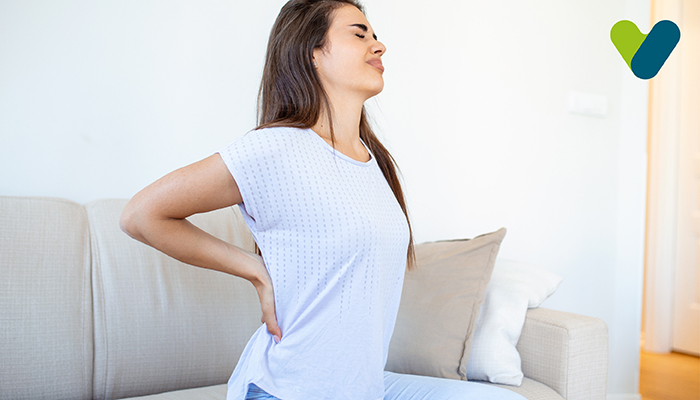How often do you bend to pick that spoon from the floor and have this sudden dab of heavy pain below your spine? Or you wake up one day, step out from your bed and feel your muscles freeze with stiffness so much that you are unable to move?
As common as it may seem, back pain can be because of a minor muscle pull or can be a symptom of a complex underlying health issue. Though it may take anywhere around 48 hours to a week to cure back pain, you must know when is the right time to see a doctor.
In this article, we'll see a step by step guide to treating back pain.
What Causes Back Pain?
Though age may not be the primary reason, the chances of having regular complaints about lower back pain, also called lumbago, can increase with age.Your doctor may or may not be able to diagnose the cause behind your back pain at the first go. However, here are some common conditions commonly linked to back pain that they may consider.
- Strain In The Muscle: sudden movement can strain your back muscles and spinal ligaments by lifting weights or a frisk. Sportspersons often face this issue while training or playing sports.
- Structural Issues: issues like a ruptured or a bulging disk can put pressure on your nerve that may trigger back pain
- Kidney Issues: kidney stones or infections in some cases can trigger back pains
- Other more serious issues may include sciatica, arthritis, osteoporosis or scoliosis.
How To Treat Back Pain?
In case of a strain or a muscle pull, there are a few home remedies that you can take to get relief from back pain:Step 1: Ice Pad
In case of an injury, an ice pad can help reduce pain and inflammation. You can do this multiple times a day for 20 minutes each.
Step 2: Use A Heating Pad
After 2-3 days of ice pads, switch to heat pads. A hot water heat pad can help you relax the stiffness and increase blood flow in the affected area.
Step 3: Hot Water Bath
Using a tablespoon of rock salt in a hot water bucket or just a hot water shower can help you relax your body and get relief from back pain.
Step 4: Hot Oil Massage
It's proven that a nice hot oil massage over ten weeks can help relieve pain and stimulate blood flow for people suffering from chronic back pain problems. On a higher level, treatments like spinal manipulation practised by licensed individuals can help relieve more serious structural problems of the spine.
Step 5: OTC Medications
Some over-the-counter medications can be taken in case of sustained pain for over three days with no improvements. Note, these medications can have side effects, so it's better to consult a doctor first. There are two kinds of drugs generally used here - nonsteroidal anti-inflammatory drugs (NSAIDs) and acetaminophen. Above these, your doctor may also prescribe a muscle relaxant to help ease the pain.
Step 6: Antidepressant Medication
At this stage, say a week has passed, and you're still in pain, your doctor may prescribe antidepressants for your chronic back pain.
Step 7: Therapy
After prolonged pain that may have been caused due to an injury, the next step to treatment could be physical therapy. A therapist can teach you the correct posture to sit, stand or move in a manner that maintains your body alignment and alleviates strain from your back. The treatment may also involve core training from time to time that may help you prevent back pain in future.
Step 8: Nerve Stimulation
Treatments like acupuncture or transcutaneous electrical nerve stimulation (TENS) that helps stimulate your nerves to reduce chronic back pain can be added to your treatment. But, again, it's essential to stay in touch with your doctor.
Step 9: Biofeedbacks
Another exceptional treatment technique used today to treat chronic lower back pain patients includes biofeedbacks. They use special machines that help you control your breathing, heart rate, blood flow and muscle tension and ultimately help you train your response to pain.
Step 10: Surgery
Listed towards the end, surgery could be the last treatment your doctor may recommend. In cases when a bulging disc is putting too much pressure on the nerve, your doctor would perform a discectomy to remove some disc material or a laminectomy. Like every other surgery, this may not always be successful and have side effects.


